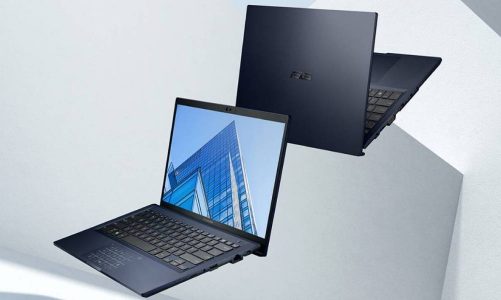Table of Contents
The car market works thanks to the balance between sales, after-sales, and remarketing. Technological backwardness is holding back change
Dealers and sales networks are a bimodal model. On the one hand, the automotive product presupposes a distribution approach characteristic of the retail world. On the other hand, the service components have grown and diversified which revolve around the use of mobility, from insurance to the varied contracts linked to the various forms of financing for the purchase or operational rental.
The central theme for the sector is not only the personalization of the usufruct formulas of a vehicle that today goes well beyond the terms of the insurance. The impact of technologies on the automotive industry also reverberates across all sales channels.
The evolution of engines associated with alternative energy sources brings EV (Electric Vehicle), Hev (Hybrid Electronic Vehicle), and Phev (Plug-In Hybrid Electric Vehicle) to showrooms, opening the market to the related charging services. Many dealerships have installed charging stations, thanks to the agreements between the parent companies and the energy utilities:
If Ev, Hev, and Phev land in the showrooms
According to the research “Dealers and new mobility” conducted by DealerLink. on a panel of 40 Italian dealers, the dealers have already organized themselves significantly for the sale and after-sales of electric and hybrid cars. 94% of the players offer training courses for sellers on electric and hybrid cars.
Most of which are organized by the manufacturers themselves, but there are also dealers who organize themselves independently. Not surprisingly, nearly two out of three respondents (67%) have a team dedicated to electric and hybrid cars while almost 9 out of 10 dealerships (87%) have a hybrid car demo park. All the dealers interviewed to explain the characteristics of electrified cars to customers through test drives, with 40% offering more original solutions such as, for example, training courses for drivers, paper guides, or video tutorials.
On the after-sales front, only 35% of the dealers interviewed have an exclusive Service area for electric and hybrid cars (which involves expensive investments but is often the result of a specific request from the manufacturer). Most dealers have a single shared Service area but are adopting equipment (especially bridges) for the maintenance of electric and hybrid cars.
The updating of the workshop technicians also takes place in most cases twice a year and one in three dealers replied that the training depends on the directives of the parent company Most dealers have a single shared Service area but are adopting equipment (especially bridges) for the maintenance of electric and hybrid cars.
The updating of the workshop technicians also takes place in most cases twice a year and one in three dealers replied that the training depends on the directives of the parent company Most dealers have a single shared Service area but are adopting equipment (especially bridges) for the maintenance of electric and hybrid cars.
In most cases, workshop technicians are also updated twice a year and one in three dealers replied that training depends on the directives of the parent company.
The Increasingly Important Role Of Telematics
The Use Of Advanced Sensors Linked To The Evolution Of The Internet Of Things Has Long Made Cars Connected And Communicating
Today it is not only the workshop service that benefits from it, which has immediate access to all information relating to the car simply by inserting the key into the appropriate reader.
To sell more and better it is necessary to manage an exhibition space that is as attractive and evocative as possible to impress customers, offering each of the relevant and meaningful experiences. The most avant-garde dealers are not only investing in their fleet but also in new futuristic concepts that mix technology and strategy.
The showroom welcomes refreshment areas, creates event spaces, and includes fully equipped corners for merchadising. The fittings mix design and lighting techniques that enhance the chrome plating of the cars. Digital signage is used in all its forms: to panel the exhibition areas and create more scenographic environments with a high emotional impact, supporting the planning of messages and contents created with accurate and sophisticated video storytelling.
Schedule programming is integrated with highly integrated content management solutions. Each car, for example, is accompanied by interactive totems or tablets used as an auxiliary tool by multichannel customers, accustomed to browsing online and looking for information in a single solution.
Few dealers have developed apps to support pre-sales and after-sales. There is also a small number of dealerships that allow you to book repair services or coupons from the online platform.
The preconception is that customers must be brought to the store, which is a pandemic regime that makes everything more complicated. Instead of using staff that measures the temperature, today it is possible to use thermographic cameras that, in a non-invasive way, process the images within fractions of a second, indicating whether the detected temperature is higher than the permitted one.
Strengthen The Digital Dimension
Digital investments should be aimed at bridging the gap between digital and physical, ensuring a smooth transition from online search to the shopping experience on the retail channel. For example, making sure that critical information (such as price or available models) remains consistent from site to the showroom, which helps to strengthen the buyer experience.
All this considering how, in lead management, before the delta was 24 hours, then it dropped to 3. Now a lead is well treated if the response occurs within 60 seconds, considering how the customer looks for the human component but is also willing to interact with chatbots in contact with a dealer.
LRM (Lead Relationship Management) draws its lifeblood from social media, with new Interbrand and intra-brand rules of engagement. Another important application of digital solutions concerns the reduction of problematic factors for the customer during the vehicle purchase process, which can be made simpler and more efficient. The report “Automotive: the role of digital technologies in the purchasing process –
The consumer’s point of view ”conducted by Deloitte confirms that all buyers hate excessive bureaucracy, which is the most negative critical point of the dealership experience. An aspect that can be improved with digital investments aimed at making processes more efficient, for example by providing the possibility of digitally signing documents remotely. This can increase the likelihood of a sale and create the necessary conditions for creating a lasting relationship with the customer.
Physical/Digital Integration
In this interregnum linked to continuous stop & go, remote working and smart working have taught people to use all the most suitable technologies to promote individual and corporate productivity: from Desktop as a Service to guarantee workers the most functional and more secure to file sharing and synchronization platforms, with the added value of call and video conference systems linked to social enterprise solutions.
Collaboration platforms are invaluable for providing remote training for salespeople, technicians, and shop floor workers.
Collaboration In The 4.0 era
Dealers need to manage investments wisely. The advantage of digital technologies is that any type of infrastructure, platform, tool, or application can be managed through consumer payment formulas thanks to the cloud. A choice that enables functional and virtuous innovation paths because they are extremely flexible and scalable.
It is thus possible to bring state-of-the-art systems into your home, solving the management of data, analyzes, and processes with all the security and compliance guarantees signed by the technological partner.
Infrastructure In The Cloud
The management of information relating to customers and their purchases must be systematic. Important assessment and analysis skills are needed to support decision-making processes and communication and promotion campaigns.
Making the most of the treasure made up of the small databases of individual dealerships becomes strategic. Starting with customer and sales information, it’s important to chart trends and leverage valuable insight data, aiming for increased sales and services enabled by data-enlightened decision making.
Big Data Management & Analytics
Dealers are subject to inventory theft, property damage, and many other risks. It is essential to monitor all areas: car parks, access points, buildings, service lanes, and showrooms. Video surveillance, complemented by video analytics, provides the highest possible level of security, minimizing liability.
And then there is the issue of cybersecurity. In fact, dealers are attractive targets for cybercriminals because they collect, process, and store large amounts of customer data within their management systems. It is essential to protect the information assets of the data, also overseeing the supply chain in the best possible way, collaborating with trusted partners to maintain security and regulatory compliance.
Also Read: Every Website Needs These 5 Elements To Convert Visitors Into Leads



